Q
Where is the USB port of the Mazda CX-5?
In the Mazda CX-5, USB port locations can vary a bit depending on the specific model year and trim level, but you'll usually find them down by the center console near the shifter, or sometimes inside the center armrest bin. It's a smart spot that keeps them handy for both the driver and front passenger to plug in phones or other devices—whether you're charging up or hooking into the Mazda Connect infotainment system.
On newer models, some of these USB ports might even support fast charging or CarPlay/Android Auto, so it’s always a good idea to flip through your owner’s manual to check exactly where yours are and what they can do. And hey, a quick pro tip: avoid those cheap, flimsy charging cables—they can mess up the port or slow down charging. Also, take a second every now and then to clean out any dust from the ports to keep that connection solid.
The CX-5’s always been a popular SUV for good reason, and little touches like thoughtful USB placement really highlight Mazda’s focus on practicality and making the drive easier. Malaysian owners should have no trouble tracking these down and making the most of them, no matter which spec they’ve got.
Special Disclaimer: This content is published by users and does not represent the views or position of PCauto.
Related Q&A
Q
Is the 2024 Mazda CX-5 petrol or diesel better?
The 2024 Mazda CX-5 is available in both gasoline and diesel variants in the Malaysian market. The optimal choice depends primarily on your driving needs. The gasoline model features 2.0L and 2.5L Skyactiv-G naturally aspirated engines, delivering smooth power output and lower maintenance costs. It excels for urban commuting and daily family use, particularly benefiting drivers who frequently make short trips. The diesel variant features a 2.2L Skyactiv-D turbocharged engine, delivering greater torque and superior fuel efficiency. It excels for long-distance driving or frequent cargo transport, though diesel vehicles typically carry higher purchase and maintenance costs. Given Malaysia's relatively low diesel prices, the diesel model may prove more economical over extended use for high-mileage drivers. Both models come standard with Mazda's i-Activsense safety suite, and their interior quality and handling performance are consistent. Note that diesel vehicles demand higher fuel quality standards; regular maintenance at authorized service centers is recommended. If you prioritize a quiet, comfortable driving experience, the gasoline model is preferable. For those focused on fuel efficiency and responsive power delivery, the diesel variant is worth considering.
Q
How many cc is the 2024 Mazda CX-5?
The 2024 Mazda CX-5 hits the Malaysian market with two petrol engine choices: the 2.0-litre and 2.5-litre Skyactiv-G naturally aspirated units. The 2.0L checks in at 1998cc, while the 2.5L comes in at 2488cc. Both powerplants leverage Mazda's clever Skyactiv tech, which strikes a nice balance between fuel efficiency and power delivery—ideal for both Malaysian city commutes and longer highway hauls.
Now, naturally aspirated engines are known for their linear power delivery at higher revs and generally lower maintenance costs, though they might not quite match turbocharged engines for low-end torque. But Mazda's done a solid job with the tuning here, so the CX-5 still feels plenty responsive in day-to-day driving.
For Malaysian buyers, the 2.0-litre variant makes a lot of sense if you're mostly zipping around the city. On the other hand, if you often carry extra passengers, load up the boot, or just want that little bit more grunt when you need it, the 2.5-litre is the way to go. Factor in the CX-5's reputation for sharp handling and that eye-catching Kodo design language, and it's definitely a strong contender in the mid-size SUV segment.
Q
How many miles can a 2024 Mazda CX-5 go on a full tank of gas?
The 2024 Mazda CX-5's range depends on its fuel tank capacity and real-world fuel efficiency. Here in Malaysia, the CX-5 typically comes with a 58-liter fuel tank. Official figures peg its combined fuel consumption at around 7.2 to 7.8 liters per 100 kilometers, so you're looking at a projected range of roughly 740 to 800 kilometers on a full tank. Of course, your actual mileage will vary based on driving habits, road conditions, and how much you're carrying.
Under the hood, the CX-5's Skyactiv-G engine and i-Stop idle-stop tech work together to keep fuel use in check. Keep a steady pace on the highway, and you might even stretch that range a bit further. For Malaysian drivers, though, our hot weather and stop-start city traffic could nudge fuel consumption up slightly. A little regular maintenance and keeping an eye on tire pressure should help you get the best out of it.
In the same segment, rivals like the Honda CR-V or Toyota RAV4 offer pretty similar range figures. At the end of the day, it really comes down to personal preference and what you need from your SUV.
Q
Which 2024 Mazda CX-5 has the best gas mileage?
The 2024 Mazda CX-5 offers multiple powertrain options in the Malaysian market, with the front-wheel-drive variant featuring the 2.0-liter Skyactiv-G naturally aspirated engine delivering the best fuel economy. Official data indicates a combined fuel consumption of approximately 6.5-6.8 liters per 100 kilometers, striking a balance suitable for both daily urban commuting and long-distance driving. This engine pairs with an optimized 6-speed automatic transmission, leveraging Mazda's exclusive Skyactiv technology to achieve efficient combustion and low friction losses while preserving the brand's signature driving pleasure. For further fuel efficiency gains, maintain proper tire pressure, avoid aggressive acceleration and braking, and use the air conditioning system judiciously. It's worth noting that the hybrid variant is not currently available in Malaysia. However, the conventional gasoline-powered CX-5 still delivers competitive fuel economy among its SUV peers, particularly offering more stable consumption in congested traffic compared to some turbocharged models. For Malaysian buyers, opting for the front-wheel-drive (FWD) version not only reduces fuel costs but also lowers the initial purchase price, as FWD models are typically more affordable than their all wheel-drive (AWD) counterparts.
Q
How many litres does a 2024 Mazda CX-5 use per 100 km?
The 2024 Mazda CX-5's fuel efficiency in the Malaysian market varies depending on model configuration and driving conditions. According to official data, its combined fuel consumption ranges approximately between 6.5 and 7.5 liters per 100 kilometers. with specific figures depending on the engine type and drivetrain configuration. For instance, the front-wheel-drive version with a 2.0-liter naturally aspirated engine tends to be more fuel-efficient, while models equipped with a 2.5-liter engine or all-wheel drive may exhibit slightly higher consumption. Driving conditions in Malaysia, such as urban congestion or highway cruising, also influence real-world fuel economy. Owners are advised to assess their vehicle's performance based on personal driving habits and road conditions. Additionally, the Mazda CX-5 incorporates Skyactiv technology, optimizing fuel efficiency and power output while maintaining an excellent driving experience. This makes it a solid choice for Malaysian consumers seeking a balance between fuel economy and performance. Routine maintenance and details like tire pressure also affect fuel consumption, and regular servicing helps keep the vehicle in optimal condition.
Q
How big is the fuel tank on a 2024 Mazda CX-5?
The 2024 Mazda CX-5 comes with a 58-liter fuel tank, a design that strikes a good balance between meeting daily commuting needs and longer road trips, all while keeping fuel efficiency in mind. For Malaysian drivers, this 58-liter tank typically translates to a range of around 600 to 700 kilometers in urban settings, though your actual mileage will vary depending on driving style and traffic conditions. Hit the highway, and you can expect to stretch that range even further.
A big part of that efficiency story is Mazda's Skyactiv technology, which optimizes fuel burn to help you go that extra mile. Good news too for local owners: Malaysia's fuel quality plays nice with the CX-5's engine. We recommend sticking with RON 95 or higher octane fuel to ensure the engine performs at its peak. If you're someone who racks up the highway klicks regularly, a quick periodic check of the fuel tank and system is a smart move to keep everything running smoothly.
In the Malaysian market, the CX-5 has built a solid rep for reliability and driving enjoyment. Its 58-liter fuel tank sits comfortably in the upper-middle range for SUVs in its class, making it more than capable of handling the demands of most drivers.
Q
Where is the 2024 CX-5 made?
The 2024 Mazda CX-5 is primarily built at the Hofu plant in Hiroshima, Japan – one of Mazda's core global manufacturing hubs, renowned for its top-tier craftsmanship and strict quality control. Now, for the Malaysian market, some CX-5 variants might roll out of the Rayong, Thailand facility. That factory handles supply for right-hand-drive markets across Southeast Asia, ensuring the vehicles are properly localized and delivered efficiently.
Malaysian buyers can actually check the origin using the VIN (Vehicle Identification Number): a "J" at the start means it's from Japan, while an "M" points to Thailand. Importantly, both production sites stick to Mazda's unified quality benchmarks. However, the Thai-built models might have subtle tweaks, maybe in rear-seat amenities or suspension tuning, to better suit typical Southeast Asian road conditions.
It's worth noting Mazda's been pushing a "single model, multiple production locations" strategy lately. This helps optimize costs and allows quicker responses to regional demands. For instance, the CX-5 is also assembled in places like Russia and Mexico. But for Southeast Asian specs, Japan and Thailand remain the main sources.
As always, I'd recommend chatting with your local Mazda dealer before buying. They can confirm the specific production batch and trim details of the CX-5 you're eyeing, making sure you get the exact setup that fits your needs best.
Q
Is there a recall on Mazda CX-5 2024?
As of now, Mazda Malaysia hasn't issued any official recall notices for the 2024 CX-5. Owners can head to the "Recall Check" section on Mazda Malaysia's official website and punch in their Vehicle Identification Number (VIN) to confirm the latest status. If there are any safety-related updates down the line, Mazda typically gets in touch with owners through their registered dealerships to arrange free inspections and repairs. We recommend Malaysian CX-5 owners keep a regular eye on their vehicle's condition and stay tuned to official channels—think the Road Transport Department (JPJ) or announcements from authorized Mazda service centers. Recalls are almost always about safety first, like potential part glitches or software tweaks, and they don't reflect poorly on the overall quality of the vehicle. Proactively responding to a recall ensures your ride stays up to the highest safety standards. The CX-5 remains a popular SUV choice, and its safety tech like the i-Activsense system has always earned high marks. Owners should also consider regular preventive check-ups at authorized service centers to keep their CX-5 performing at its best.
Q
What type of oil does a 2024 Mazda CX-5 take?
For the 2024 Mazda CX-5 in Malaysia, Mazda recommends using 0W-20 fully synthetic engine oil that meets their factory specifications. This low-viscosity oil does a solid job boosting fuel efficiency and cutting down on engine wear during cold starts – perfect for daily driving in our tropical climate. If you're pushing the car hard with spirited driving or it's got some serious miles on the clock, stepping up to 5W-30 might be a good call for better high-temperature protection. But honestly, your best bet is to stick to what the owner's manual or Mazda's authorized service centers suggest first.
One thing to keep in mind: Malaysia's hot and humid conditions can really make oil break down faster. So even with fully synthetic stuff, you've gotta stay strict on oil changes – every 10,000 kilometers or 6 months, whichever comes first. When picking oil, make sure it has the latest certifications like API SP/GF-6 or ACEA C5. Those oils pack more anti-wear additives, which is crucial for protecting all the精密 (jingmì - precise) moving parts in the Skyactiv engine.
If you're mostly stuck in city traffic with a lot of stop-and-go, it's worth looking for oil with good anti-carbon buildup properties. That helps keep the engine clean inside for the long haul. And hey, do yourself a favor – buy your oil through Mazda's official after-sales channels. That way, you know you're getting the real deal, formulated for Malaysia's roads and weather. Using sketchy, unbranded oils? Yeah, that could end up voiding your warranty, and nobody wants that headache.
Q
What is the fuel consumption per 100km of the Mazda CX-5 2024?
The 2024 Mazda CX-5's fuel economy in the Malaysian market varies depending on the powertrain and driving conditions. The 2.0-liter naturally aspirated engine variant returns a combined fuel consumption of approximately 6.5 to 7.2 liters per 100 kilometers, while the 2.5-liter version is slightly thirstier, coming in at around 7.4 to 8.1 liters per 100 kilometers. Real-world figures, however, can fluctuate based on factors like heavy city traffic, air-conditioning usage, and individual driving styles.
Mazda's Skyactiv technology plays a key role here, optimizing engine efficiency and incorporating lightweight materials to boost fuel economy without sacrificing that signature Mazda driving fun – a nice fit for Malaysia's diverse road conditions. For those looking to squeeze out a bit more from each tank, keeping your tires properly inflated, avoiding aggressive acceleration and hard braking, and making smart use of the stop-start system are all solid tips.
All in all, the CX-5 remains a popular SUV choice, striking a pretty good balance between fuel efficiency and performance. It's a practical pick for family drivers who want something that doesn't guzzle gas but still delivers when you need it.
Latest Q&A
Q
Which is better? BMW X1 vs X2?
Both the BMW X1 and X2 fall under BMW's compact SUV lineup, but they carve out distinct identities in terms of design and positioning, catering to different needs of Malaysian buyers. The X1 leans heavily into practicality and space. It's got a larger footprint, offering more legroom for rear passengers and a roomier boot – ideal for families or folks who regularly need to haul stuff around.
The X2, on the other hand, is all about that sporty vibe. It sits lower to the ground, boasts a sleeker, more contemporary look, and delivers sharper, more agile handling. This one's for the younger crowd who value individuality and driving excitement.
Under the hood, both offer similar engine choices, including efficient turbocharged petrol and diesel units, though the X2 might get a slightly sportier tune. Tech-wise, you'll find BMW's latest iDrive system and driver assistance features in both, though exact specs can vary depending on the model year and local market specifications.
When it comes to Malaysian roads, the X1's slightly higher ground clearance gives it a tiny edge in terms of rough-road capability, while the X2 feels right at home zipping around the city.
So, the advice? Choose based on what matters most to you. If space and everyday usability are top priorities, the X1 is your bet. If you're after a sportier aesthetic and a more engaging drive, then the X2 should be on your shortlist. Either way, you're getting BMW's signature build quality and driving dynamics, plus both hold their value well in Malaysia and benefit from a solid after-sales network.
Q
How much is BMW X2?
In Malaysia, the BMW X2's pricing varies depending on the trim and specs. Right now, the entry-level sDrive20i M Sport starts at around RM258,800, while the high-performance X2 M35i xDrive goes for approximately RM358,800. Keep in mind, these figures can shift based on optional extras, ongoing promotions, or individual dealer policies across different regions.
Slotting into the luxury compact SUV segment, the X2 blends sporty styling with everyday practicality. Under the hood, you'll find a 2.0-liter turbocharged engine – 192 hp for the sDrive20i and a punchy 306 hp for the M35i. Standard kit includes the M Sport package, a panoramic sunroof, and BMW's iDrive infotainment system, to name a few highlights.
For Malaysian buyers, the X2's nimble dimensions make it ideal for city driving, without skimping on that signature BMW driving pleasure. A quick heads-up: locally assembled (CKD) models might come with tax advantages, so it's smart to hit up your nearest authorized dealer for the latest quotes and to book a test drive.
In the same class, you're looking at rivals like the Mercedes-Benz GLA and Audi Q3, but the X2 stands out with its more distinctive, coupe-like SUV vibe. If your budget's a bit tighter, the BMW X1 is worth a look too – it shares similar tech but prioritizes extra interior space for those who need it.
Q
What is the difference between BMW X1 and X2?
While both the BMW X1 and X2 fall under BMW's compact SUV lineup, they carve out distinct identities when it comes to design, positioning, and driving feel. The X1 goes for a more traditional SUV vibe, sitting taller on its wheels and offering more generous passenger and boot space – a solid pick for family-oriented folks who value practicality. The X2, on the other hand, leans into that crossover look; it's lower-slung with sportier lines, all about driving fun and making a personal style statement, which hits the mark for younger buyers chasing something trendy and dynamic.
Over in the Malaysian market, both models come with a range of powertrains, including efficient petrol and diesel engines. But the X2 typically gets a sportier tune, with a firmer chassis setup to match. Inside, the X1 prioritizes functionality, while the X2 ups the ante on design details to highlight its more individualistic character. Price-wise, the X2 usually commands a slight premium over the X1, reflecting its more niche appeal.
For Malaysian customers, if you're regularly hauling family or luggage, the X1 makes more practical sense. If, however, driving engagement and standing out from the crowd are higher on your list, the X2 will likely be more alluring. Both stay true to BMW's control heritage, just striking different balances between space and style – it really boils down to what matters most for your lifestyle.
Q
How much is a Ford Mustang?
In Malaysia, the price of a Ford Mustang can vary depending on the model year, specifications, and import duties. Right now, new Mustangs typically range from around RM450,000 to RM600,000, with the exact figure depending on the variant you go for—like the EcoBoost (2.3L turbocharged) or the GT (5.0L naturally aspirated V8). As a classic American muscle car, the Mustang has always been a hit with enthusiasts thanks to its iconic design and gutsy performance, making it a solid pick for Malaysian drivers who crave a bit of personality in their ride.
It’s worth keeping in mind that importing a car here means factoring in extra costs like tariffs, sales tax, and insurance, all of which add up to the final on-the-road price. If you’re open to a used model, you’ll find better deals in the secondhand market, but make sure you thoroughly check the car’s condition and service history before committing.
While the Mustang remains a niche choice locally, its strong brand reputation and sheer driving excitement help it carve out a spot in the performance car scene. If you want heads turning and that rush of raw power under your right foot, this pony car is definitely one to shortlist.
Q
How much to replace a transmission of 2006 Ford Mustang ?
If you need to replace the transmission in a 2006 Ford Mustang here in Malaysia, you're looking at a ballpark cost of around RM6,000 to RM15,000. The final price tag really hinges on a few things: whether it's a manual or automatic gearbox, if you go for a brand-new OEM unit versus a remanufactured or used one, and of course, the labor rates at the shop you choose. New factory transmissions will hit your wallet harder, but going the reman or second-hand route can definitely bring those costs down. I’d strongly advise getting quotes from multiple workshops and making sure you’re clear on the warranty terms before pulling the trigger.
One thing to keep in mind: if you ignore transmission issues, they can snowball into bigger problems—think damaged clutches or driveline components—so addressing them early saves you from costlier repairs later. Regular transmission fluid changes (every 60,000 to 100,000 km) are also key to keeping that gearbox happy and extending its life. If you start noticing delayed shifts, strange noises, or fluid leaks, don’t wait around—get it checked out ASAP. And since we’re talking about an older American ride, it’s worth tracking down a technician who knows these models well to ensure parts compatibility isn’t an issue.
View MoreRelated News
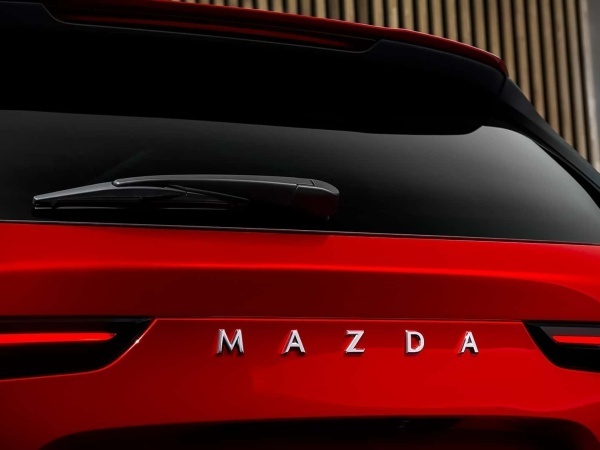
The third-generation Mazda CX-5 debuts in Europe, equipped with the largest central control screen in Mazda's history
MichaelJul 11, 2025
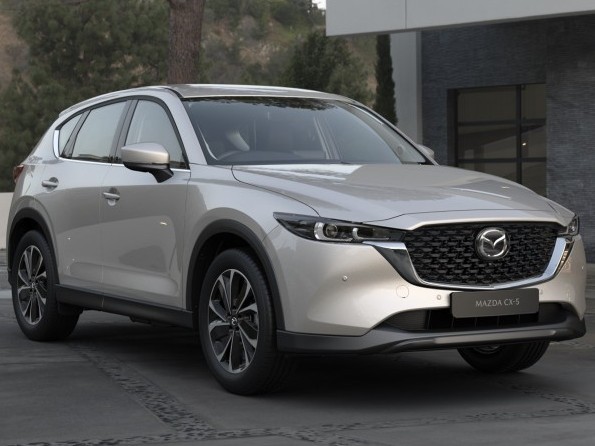
Stunning Looks, Premium Feels: Mazda CX-5's Dual Charm in Detail
AshleyApr 23, 2025
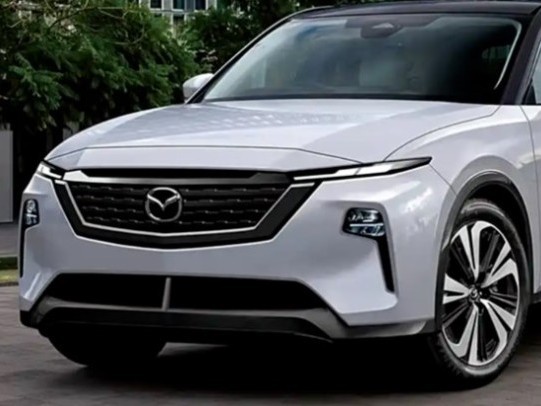
Mazda CX-5 showcased at Thailand Motor Expo 2024, new generation could be released at the Tokyo Auto Show next year
Kevin WongDec 4, 2024
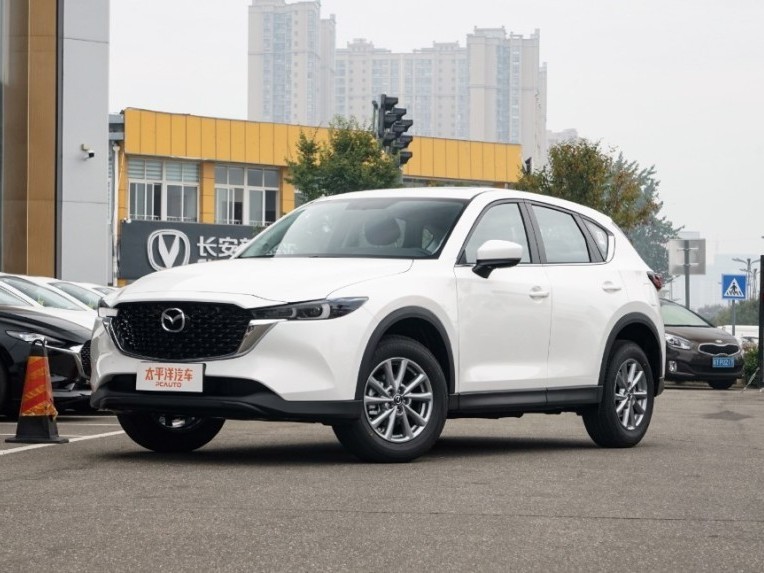
The third generation Mazda CX-5 is expected to debut in 2025! It may be equipped with self-developed hybrid technology!
RobertNov 25, 2024
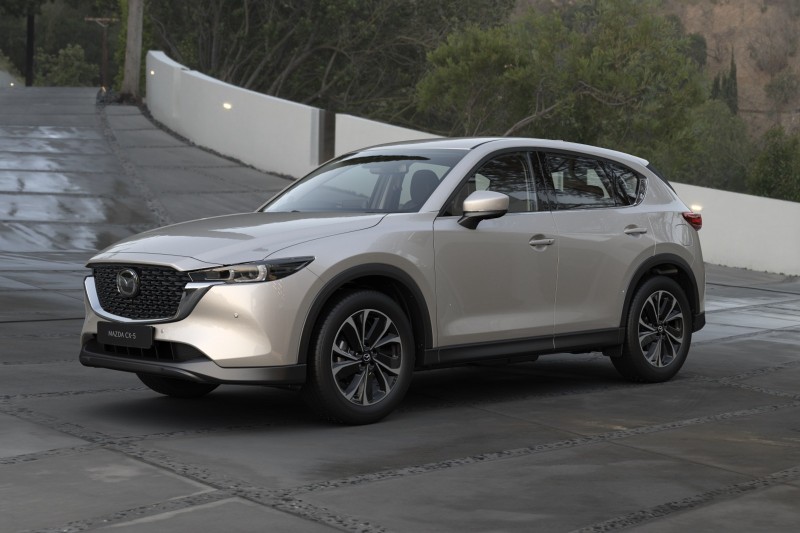
Analysis of the advantages and disadvantages of Mazda CX-5, a SUV that people both love and hate?
LienSep 26, 2024
View More











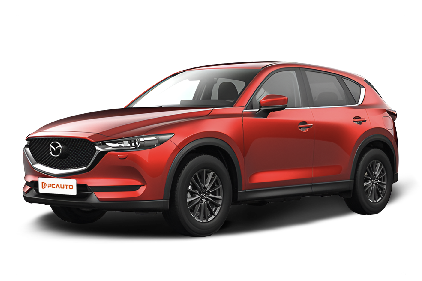





Pros
Cons